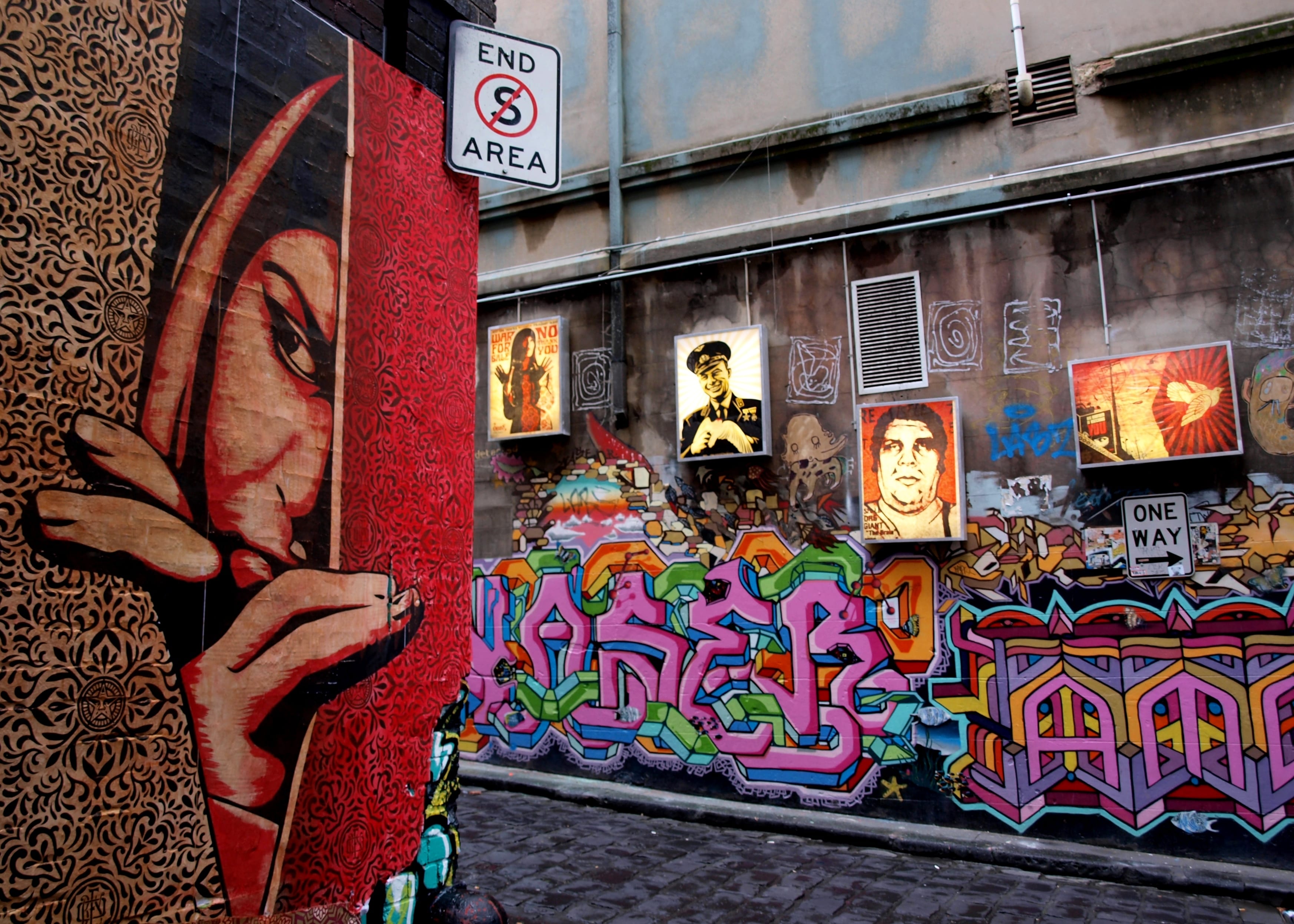Banksy, Shepard Fairey, Keith Haring and Jean-Michel Basquiat are artists, whose names are creeping out from the underground world of urban street art, passing through the fine art world and entering mainstream culture and its marketplace. An aesthetic that, at one time, was regarded as vandalism and a nuisance, is now highly sought after. Everything from posters and documentaries to t-shirts, iPhone cases and coffee table books, influenced by street art, can be found at a local Target or Urban Outfitters. With this increased popularity and intrigue, many artists have taken action to assert their rights to copyright protection over their creative works.
Before 2014, the copyright infringement cases relating specifically to street art were few and far between.[1] A recent increase in litigation over these rights has sparked several legal and philosophical questions: What is street art? Who owns the copyrights to the art work? How can these works be shared and represented? Two cases, focusing on the appropriation of specific street art works by major fashion brands, have contributed significantly to this debate.
Well-known Miami based street artist, David Anasagasti, more commonly known as Ahol Sniffs Glue, made headlines, in the summer of 2014, when he sued the popular retailer, American Eagle, for “blatant unlawful and pervasive infringement.”[2] The retailer copied one of Ahol’s famous droopy eye works, Ocean Grown, and featured it as the background for its 2014 global online, print and store advertising campaigns.[3] While the issues of appropriation and unlawful copying were at the forefront of the case, a second underlying issue spoke more directly to the unique nature of street art litigation. The complaint addressed how Ahol’s reputation, as an artist, is founded in the street art counter culture and how much of his credibility is based on the public perception that he “doesn’t sell out to large corporate interest.”[4] The innocent “young clean cut” image that American Eagle represents runs contrary to the imagery and commentary Ahol strives for in his art.[5] By December 2014, American Eagle and Ahol had reached a confidential mutually acceptable settlement agreement, leaving the issues raised in Ahol’s complaint generally unresolved.[6]
The exploitation of both the art and street credibility of artists, like Ahol, have become highly profitable marketing tools within the fashion industry. Ahol is not alone in his efforts to protect both his works and image. As recently as August 2015, the Brooklyn based street artist, Joseph Tierney, also known as Rimes, filed a complaint against the high fashion label Moschino and famous fashion designer, Jeremy Scott. Rimes’ claim alleges that Moschino and Scott directly copied portions of Rimes’ piece, Vandal Eyes, and reprinted the image on garments found in Moschino’s 2015 fall/winter collection.[7] Rimes learned of this appropriation of his artwork in dramatic fashion when Katy Perry took to the Metropolitan Museum of Art’s Costume Institute Gala red carpet wearing a Moschino gown featuring Rimes’ art and signature.[8] Like Ahol, Rimes is concerned not only with the misappropriation of his works, but with the effect such an establishment driven high fashion “publicity stunt,” utilizing a celebrity pop star, would have on his reputation as a respected anti-establishment street artist who is not necessarily interested in selling out to big business.[9]
In both these instances, the legal actions taken by the street artist brings into focus the reality that in today’s competitive and lucrative fashion marketplace “affiliation with artists bearing ‘street credibility’ is highly sought-after”.[10] Fashion houses and retailers, in an effort to meet customer interest and demand, are prepared to push the envelope by commercially exploiting the works of often unwilling street artists. Use now and pay later, if ever, seems to be the current business plan for fashion retailers.[11] The world of street art is entering a transformative phase, from its street value and largely underground counter culture community to a more widely accepted and commercially sought after artistic aesthetic. How street artists utilize copyright laws to protect their works will have a lasting impact on how street art is viewed and used in the marketplace.

